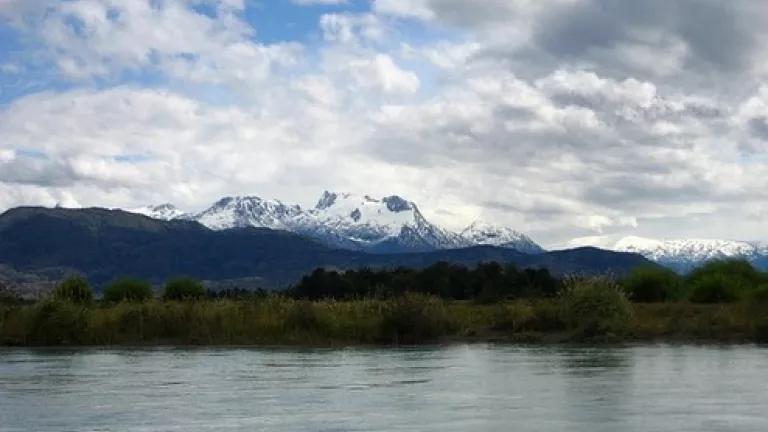
“One-fourteen p.m. Five cormorants, flying… One sixteen p.m. Eighteen ducks, swimming…”
One of my occasional duties on board the “Bote de Brian” was to identify, count and record the birds we saw on the Baker River. I had never done much birding before, but it didn’t take long for me to see that the variety and number of species living in this corner of the world is really remarkable.
We saw cormorants flying and ducks swimming—and lots of each—as well as sparrows dashing through the air, vultures lurking in a tree, ducks swimming, flamingos wading on the shore, herons landing on the banks, parakeets chirping loudly, ducks swimming, condors gliding far overhead, swans coasting along in formation, and – oh, did I mention?—ducks swimming.
We also saw a few animals, mostly the domesticated farm animals kept the houses we passed (cows, horses, sheep and dogs), as well as wild species like guanaco. I saw a puma’s footprint, though no actual puma. And several times on the river our silent reveries were interrupted by a jumping salmon – a rare event, according to Brian.
***
The land here supports such a range of animals because it, too, is so varied. In fact, I was struck at how the landscapes changed as we made our way down the Baker. The first day we passed through wide river banks, backed by low hills and sparse vegetation, with the snow-capped Andes seemingly distant in the background.
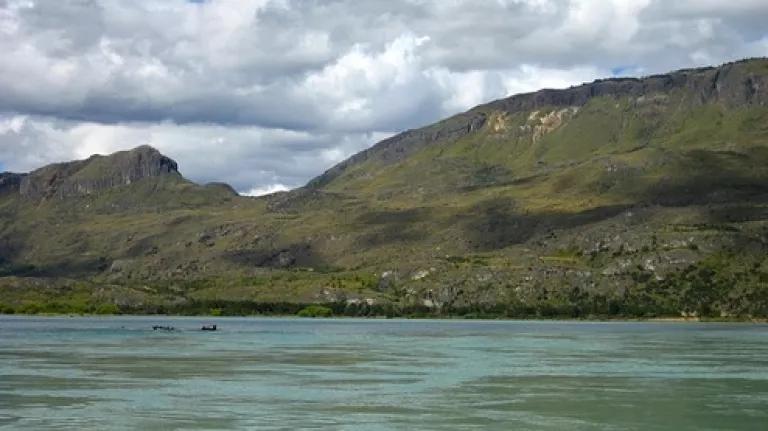
Day 1, views from the boat
Yet our campsite that night forecasted the more verdant surroundings that would come: we camped in the middle of a lush, green forest with vines and moss reaching down everywhere from branches, and mushrooms popping up from the ground.
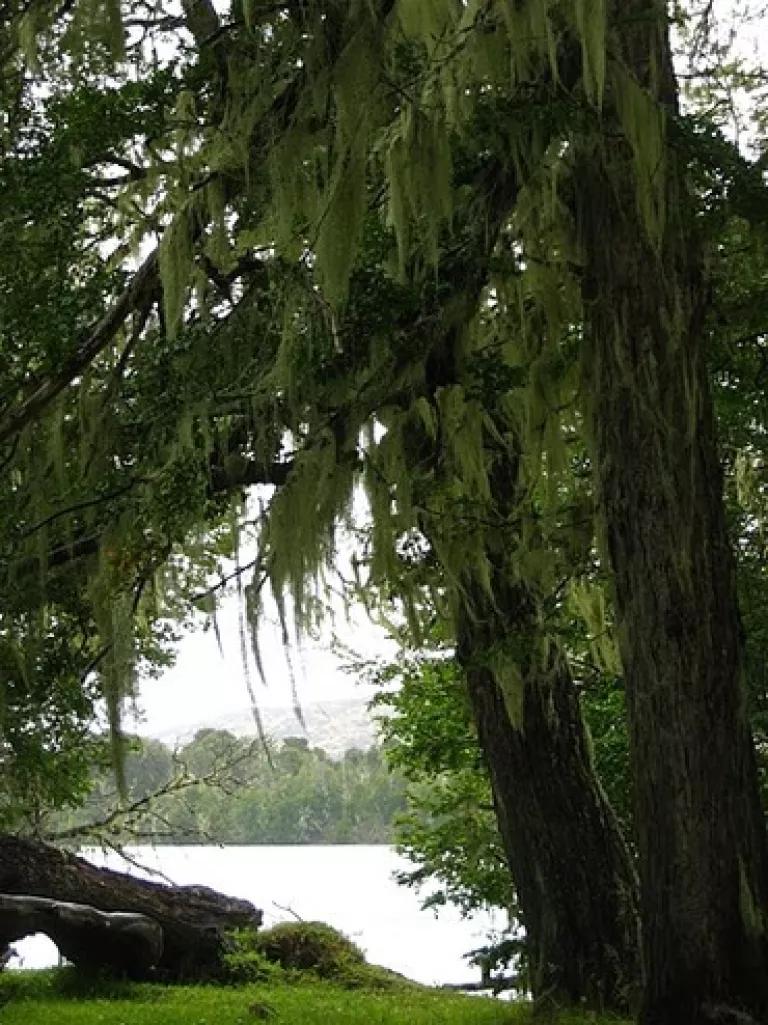
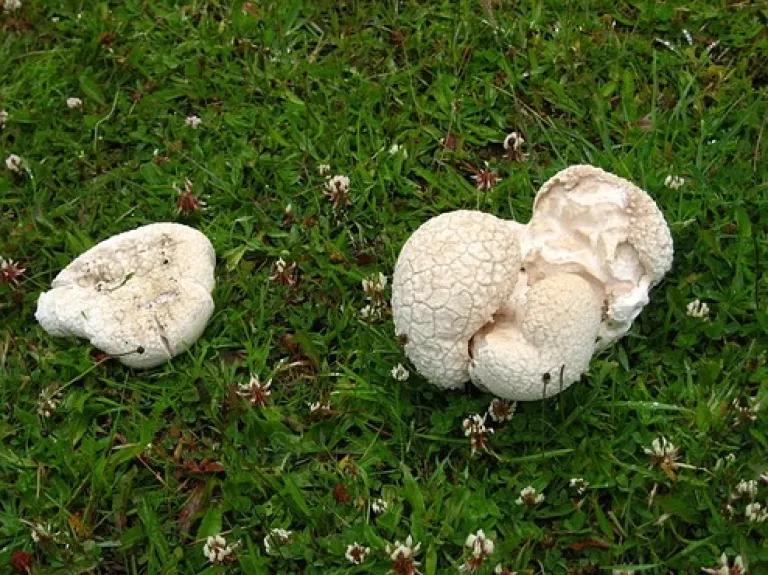
Day 1, campsite - mossy trees and mushrooms
The second day the trees grew increasingly thicker together and closer to the river, eventually reaching out over the banks and appearing to grow up from the water. We stopped just before Gonzalez rapids on a small island that seemed as wet, as green and as thick as any rainforest.
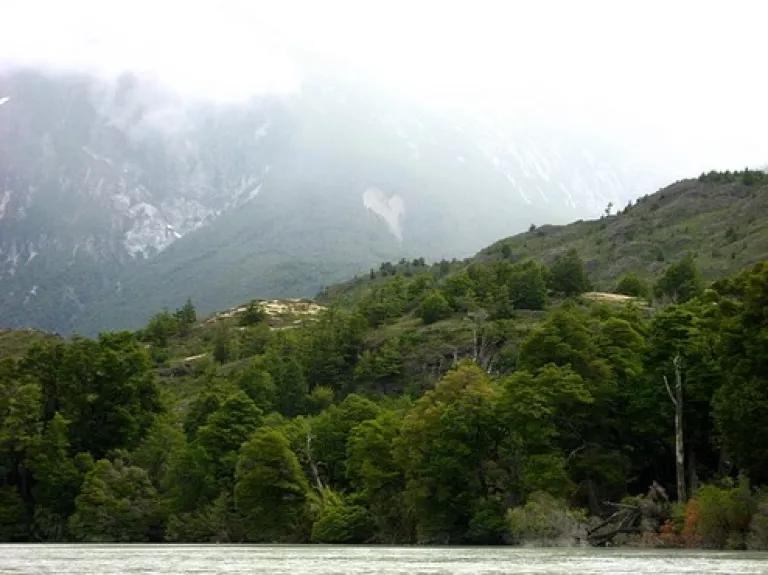
Day 2, thick trees and the "Heart of Gonzalez" in the mountainside
The third day’s surroundings were the most striking, as we rowed through the canyons of the once-distant mountains. For about an hour four condors glided together in a graceful dance high above the steep, sheer cliff walls, which were always patterned with green lines and often interrupted by small waterfalls.

Day 3 - side of the canyon wall
The fourth day we approached the delta, and we seemed to have come out on the other side of the mountains as the land flattened out again and we could faintly smell salt water. All around, the river banks were still green with trees, and tall, thick grass. And there were still birds to count.
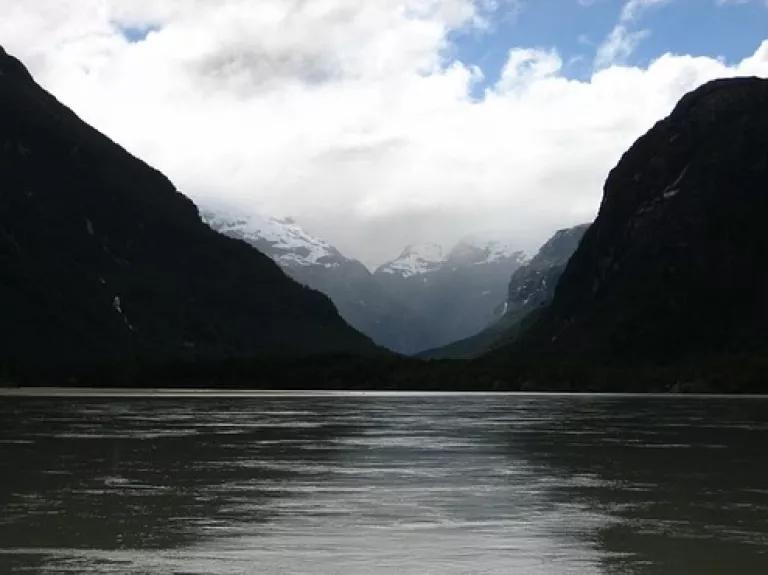
Day 4, looking back up the River
Brian counts the birds and records his observations every time he makes this monthly trip because, well, no one else ever has. And that’s a problem. Because if nobody knows how many and what kind of animals live here, how will anyone know what would be lost if commercial development were to destroy this amazing habitat?
HidroAysén’s environmental impact assessment, or EIA, and its Addenda have been remarkably deficient in documenting the amazing biodiversity this river supports. That’s not just my opinion, but also the opinion of several Chilean state agencies, who expressed their desire for better information about the region’s species, marine and terrestrial, in the second ICSARA this past January. (You can read my explanation of the entire EIA review process here.) With the resources they have available to them and the time they have had to create and submit their environmental reports, HidroAysén should have been able to document and present good, solid information about Patagonia’s wildlife by now. That the company hasn’t is an indication of the value they place on this land and its animals.
Getting good data isn’t hard – just ask Brian. All you need is a raft, a notebook and a pencil.

